Explore 4 Must Know Wonders of Morocco and Traditional Clothes of Morocco
1. Sahara Desert
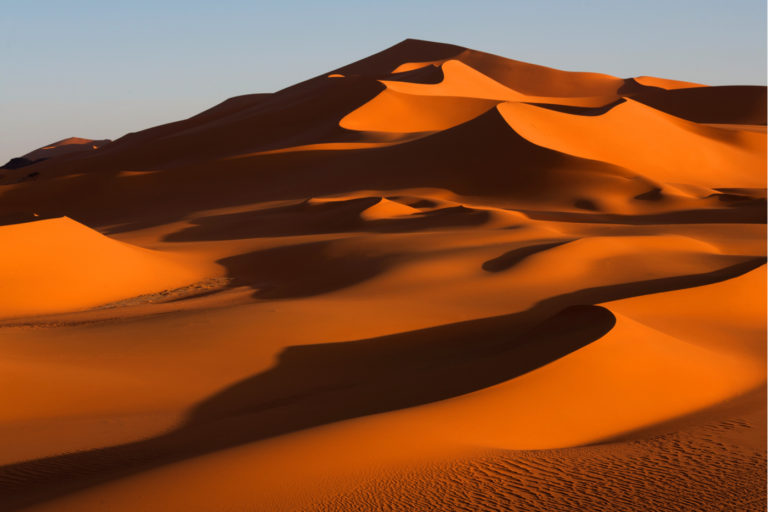
The Sahara Desert stands as the largest arid and lowest-latitude hot desert globally, constituting 31% of Africa’s landmass and earning its designation as one of the 7 Natural Wonders of Africa. Situated in the northeastern part of Africa, Morocco occupies a portion of the Sahara Desert’s northeastern region.
Spanning an extensive area of 3,600,000 square miles (9,200,000 sq. km), the Sahara extends 2,983 miles (4,800 km) from east to west and stretches 1,118 miles (1,800 km) from its northern to southern borders. Encompassing 10 different countries, including Algeria, Chad, Egypt, Libya, Mali, Mauritania, Niger, Sudan, Tunisia, and Morocco, the Sahara Desert features diverse landscapes.
In Morocco, the Sahara Desert boasts two remarkable ergs, Erg Chebbi and Erg Chigaga, each presenting unique wonders. The dunes of Erg Chebbi, soaring to a height of 492 feet (150 m), provide a breathtaking spectacle, contributing to the mesmerizing panorama of the Moroccan Sahara Desert.
2. Hassan II Mosque

Situated in the city of Casablanca, the Hassan II Mosque stands as the largest mosque in Morocco and the 13th largest globally. Notably, its minaret holds the distinction of being the world’s tallest, soaring to a height of 689 feet (210 m).
Comprising 60 stories, the minaret is crowned with a laser that points toward Mecca. The mosque’s construction was successfully concluded in 1993. Internally, the mosque can accommodate 25,000 worshippers, while an additional 80,000 can be accommodated in the outside hall, bringing the maximum capacity to an impressive 105,000.
Crafted with hand-cut marble walls and featuring a retractable roof, the Hassan II Mosque complex spans 22 acres (9 ha), strategically positioned between the harbor and the El Hank lighthouse. This architectural marvel serves as a symbol of Morocco’s rich cultural heritage and religious significance.
3. Ouzoud Falls
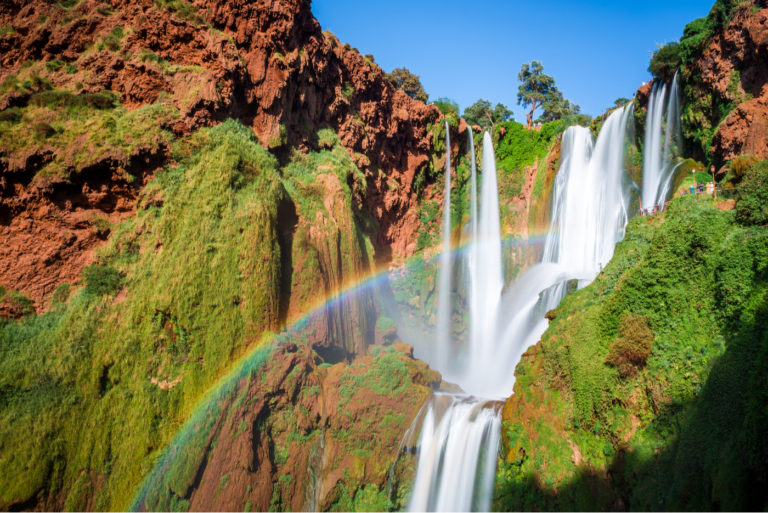
Ouzoud Falls stands as the largest waterfall in Morocco, cascading down to a height of 330 feet (110 m) with three distinctive drops. The most extended of these drops measures 246 feet (75 m).
While Ouzoud Falls may not boast considerable width in comparison to many African waterfalls, it is renowned for its aesthetic appeal, characterized by its diverse cascades. The falls are considered particularly captivating due to the varying formations of water as it descends.
Situated on the El Abid River, approximately 93 miles (150 km) northeast of Marrakech, Ouzoud Falls emerges as one of the most striking natural attractions in Morocco. This site has garnered significant popularity, becoming the most visited destination in the surrounding area, drawing visitors with its natural beauty and scenic allure.
4. Toubkal
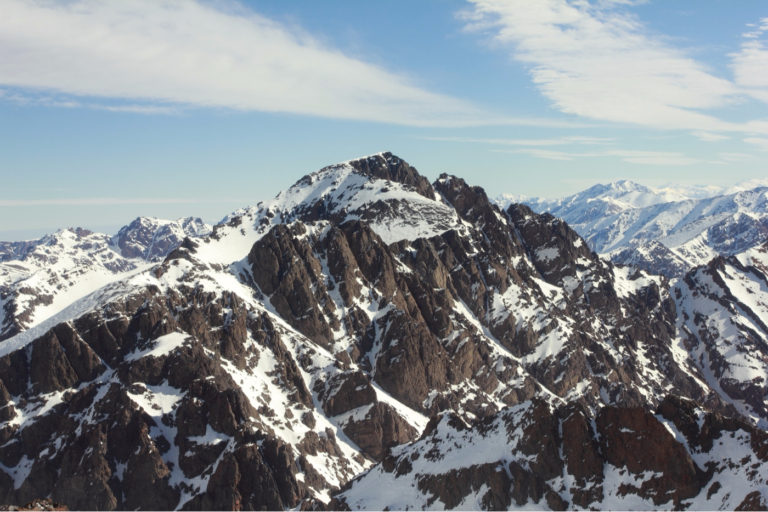
Toubkal, also known as Tubkal, holds the distinction of being the highest mountain in Morocco, the Atlas Mountain range, North Africa, and the Arab World.
With a summit soaring to 13,671 feet (4,167 m), Toubkal is situated approximately 39 miles (63 km) south of Marrakesh. It stands as a prominent attraction in Morocco, drawing climbers from around the globe to undertake the challenge of reaching its summit.
The ascent of Toubkal is generally considered non-technical; however, it presents its own set of challenges, including steep and slippery slopes, as well as the risk of altitude sickness. The trek to the summit can typically be completed in two days, although some climbers opt for a third day to aid acclimation and reduce the effects of altitude sickness. The allure of Toubkal lies not only in its elevation but also in the breathtaking landscapes and the rewarding sense of accomplishment for those who undertake the journey.
Traditional Clothes of Morocco
1. Djellaba
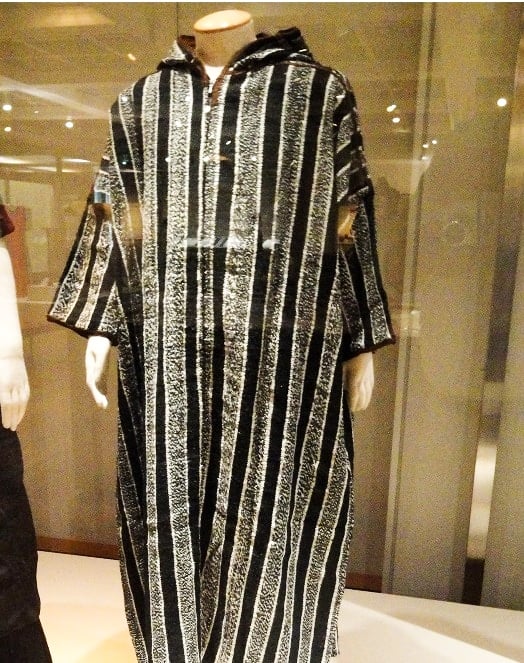
The traditional attire for both Moroccan men and women is known as the Djellaba. It is a long, loose-fitting robe characterized by extended sleeves and a hood, referred to as a qob. Men typically opt for Djellabas in solid colors, while women’s Djellabas are vibrant and adorned with beads and various embellishments. Originally worn exclusively by men and crafted from wool, the Djellaba has evolved to be worn by both genders, and cotton has become a common alternative to wool. The Djellaba, worn as an outer garment, has transformed into a versatile attire suitable for various occasions.
2. Gandoura

The Gandoura is a comfortable summer dress embraced by both men and women. This loose-fitting garment features short sleeves and side pockets. Men typically don plain-colored Gandouras, while women often opt for bright and colorful variations. Originating as the traditional attire of the Berbers, the Gandoura is a versatile and lightweight garment.
In the Sahara regions of Morocco, men wear a distinct version of the Gandoura known as the Deraa. This particular style is characterized by its loose fit and open sides, allowing for ventilation in the hot and arid climate of the region. The Gandoura and its variations reflect not only comfort but also the cultural richness and adaptability of traditional Moroccan clothing.
3. Kaftan
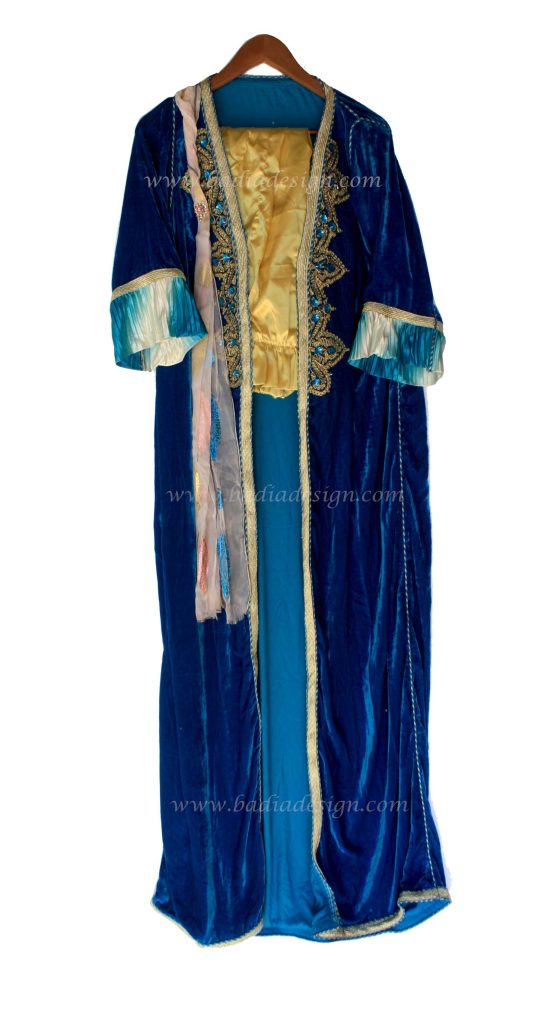
The Kaftan stands out as one of the most popular Moroccan garments, cherished not only by Moroccan women but also embraced by women globally. Renowned international designers have featured the Kaftan in their collections for fashion shows. This traditional dress, worn by Moroccan women, is characterized by its single-piece design, with or without full sleeves, and typically reaching the ankles. The sleeves may vary between loose and fitted styles.
Originally reserved for the royal family in earlier times, the Kaftan has transcended social classes, and women from all walks of life now adorn themselves with this elegant attire. Introduced to Morocco by Muslims and Jews from Andalusia, the Kaftan represents a single-piece dress, and its name reflects this characteristic. Kaftans are suitable for both special occasions and casual wear, made from a variety of materials and featuring intricate details such as gold or silver threads, embroidery, pearls, beads, and more.
